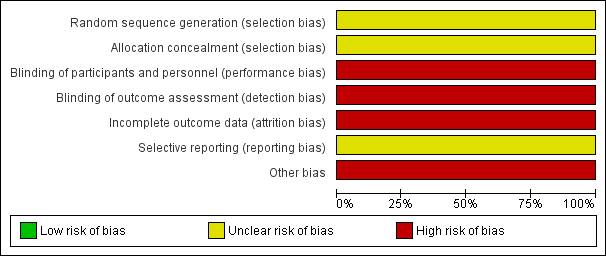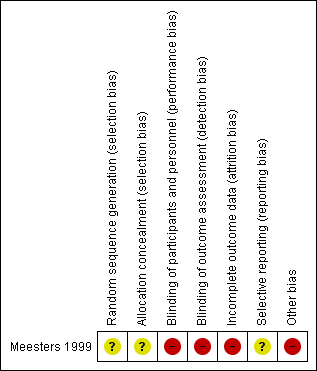Contenido relacionado
Revisiones y protocolos relacionados
Catherine A Forneris, Barbara Nussbaumer‐Streit, Laura C Morgan, Amy Greenblatt, Megan G Van Noord, Bradley N Gaynes, Jörg Wipplinger, Linda J Lux, Dietmar Winkler, Gerald Gartlehner | 24 mayo 2019
Antidepresivos de segunda generación para la prevención del trastorno afectivo estacional en adultos
Gerald Gartlehner, Barbara Nussbaumer‐Streit, Bradley N Gaynes, Catherine A Forneris, Laura C Morgan, Amy Greenblatt, Jörg Wipplinger, Linda J Lux, Megan G Van Noord, Dietmar Winkler | 18 marzo 2019
Barbara Nussbaumer‐Streit, Catherine A Forneris, Laura C Morgan, Megan G Van Noord, Bradley N Gaynes, Amy Greenblatt, Jörg Wipplinger, Linda J Lux, Dietmar Winkler, Gerald Gartlehner | 18 marzo 2019
Barbara Nussbaumer-Streit, Kylie Thaler, Andrea Chapman, Thomas Probst, Dietmar Winkler, Andreas Sönnichsen, Bradley N Gaynes, Gerald Gartlehner | 4 marzo 2021
Barbara Nussbaumer‐Streit, Amy Greenblatt, Angela Kaminski‐Hartenthaler, Megan G Van Noord, Catherine A Forneris, Laura C Morgan, Bradley N Gaynes, Jörg Wipplinger, Linda J Lux, Dietmar Winkler, Gerald Gartlehner | 17 junio 2019
Georgina R Cox, Caroline A Fisher, Stefanie De Silva, Mark Phelan, Olaoluwa P Akinwale, Magenta B Simmons, Sarah E Hetrick | 14 noviembre 2012
Sarah E Hetrick, Georgina R Cox, Katrina G Witt, Julliet J Bir, Sally N Merry | 9 agosto 2016
Arja Tuunainen, Daniel F Kripke, Takuro Endo | 19 abril 2004
Katie Pigott, Ilaria Galizia, Kamini Vasudev, Stuart Watson, John Geddes, Allan H Young | 3 septiembre 2016
Akshya Vasudev, Karine Macritchie, Kamini Vasudev, Stuart Watson, John Geddes, Allan H Young | 7 diciembre 2011
































